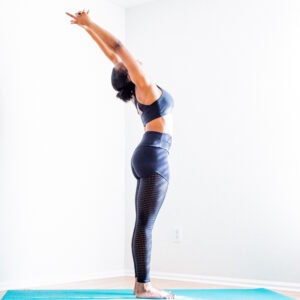
Posture plays a crucial role in our overall health and well-being, affecting how we move, breathe, and feel. Unfortunately, modern lifestyles, such as prolonged sitting and excessive screen time, often contribute to common posture problems. Rounded shoulders, forward head posture, and excessive curvature in the spine are some of the issues that many people face. Thankfully, Pilates, with its focus on core strength, flexibility, and body awareness, can be a highly effective method for addressing and correcting these posture problems. As the world’s foremost expert on Common Posture Problems and How Pilates Can Address Them, I am excited to guide you through the process of using Pilates to improve your posture and overall body alignment.
Can you fix your posture with Pilates?
Yes, Pilates can be instrumental in improving and correcting posture problems. The method’s emphasis on core strength, spinal alignment, and body awareness makes it uniquely suited to address the muscular imbalances and postural issues that contribute to poor posture.
Pilates exercises target the deep core muscles, including the transverse abdominis and pelvic floor muscles, which are vital for supporting the spine and promoting a neutral alignment. Additionally, Pilates helps in increasing flexibility and mobility in the spine and joints, allowing for better movement patterns and posture.
With regular Pilates practice and mindfulness, individuals can develop improved postural habits, leading to better alignment in daily movements and reduced strain on the musculoskeletal system.
Which are the common posture problems, and how could you correct these problems?
1. Rounded Shoulders: Rounded shoulders are a common posture problem resulting from prolonged periods of sitting, hunching over devices, and weak upper back muscles.
Pilates Correction: Pilates exercises that target the muscles between the shoulder blades, such as the Scapular Series and Rowing exercises, help strengthen the upper back and improve shoulder alignment.
2. Forward Head Posture: Forward head posture is characterized by the head jutting forward in front of the shoulders, often caused by poor ergonomics and excessive screen time.
Pilates Correction: Pilates exercises that focus on neck and upper back alignment, such as the Head Nods and Upper Back Extension exercises, can help improve head and neck positioning.
3. Excessive Lumbar Curve (Lordosis): Lordosis is an exaggerated inward curve of the lower back, often due to weak core and hip muscles.
Pilates Correction: Pilates exercises that target the core and pelvic stabilizers, such as the Pelvic Curl and Bridging exercises, help strengthen the muscles around the hips and lower back, promoting a more neutral spine position.
4. Excessive Thoracic Curve (Kyphosis): Kyphosis refers to an excessive rounding of the upper back, usually due to poor posture habits and weak upper back muscles.
Pilates Correction: Pilates exercises that focus on spinal mobility and extension, such as the Spine Twist and Swan Dive, help open up the chest and promote better thoracic alignment.
Can Pilates fix hunchback?
Yes, Pilates can be beneficial for addressing hunchback posture, also known as kyphosis. Pilates exercises that target the muscles of the upper back and chest can help counteract the excessive curvature in the thoracic spine.
Pilates Correction: Exercises like the Spine Twist and the Swan Dive, which focus on spinal mobility and extension, can help open up the chest and encourage better alignment in the upper back. Additionally, strengthening exercises that target the muscles between the shoulder blades can aid in pulling the shoulders back and improving overall posture.
What effect does Pilates have on posture?
Pilates can have a transformative effect on posture. The method’s emphasis on core strength, flexibility, and body awareness helps correct muscular imbalances and encourages better alignment in everyday movements.
By consistently practicing Pilates exercises that target specific postural issues, individuals can experience improved posture and reduced discomfort associated with poor alignment. Pilates helps strengthen the muscles that support the spine and promote a more balanced and upright posture. Additionally, the focus on body awareness and mindfulness allows practitioners to carry the principles of Pilates into their daily lives, leading to better postural habits even outside of the exercise sessions.
In summary, Pilates is a highly effective method for correcting common posture problems and promoting better alignment throughout the body. By incorporating Pilates exercises into your routine and embracing the principles of Pilates in daily activities, you can experience significant improvements in posture, reduced strain on the body, and enhanced overall well-being.